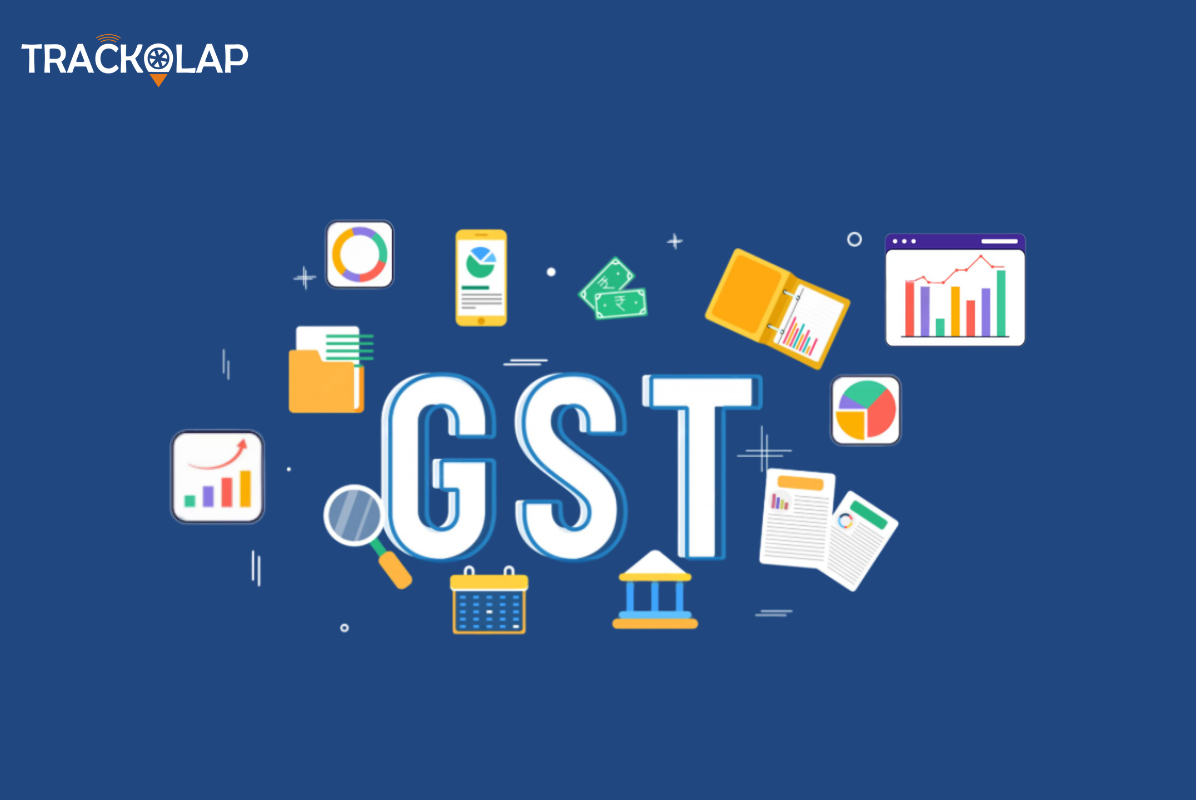
New GST Rates 2025: Latest Updates Every Business Should Track
India's Goods and Services Tax (GST) system has undergone its largest revision since it started in July 2017. The GST Council, led by Union Finance Minister Nirmala Sitharaman, approved extensive changes in the GST structure on 3 September 2025. These changes will officially be effective on 22 September 2025, which is during the Navratri festival season.
The government has made the four-tier GST structure simpler and easier in a business-friendly format. Businesses in the retail, FMCG, manufacturing, logistics, and services sectors need to learn about the new GST rates in order to manage pricing, supply chains, and compliance.
Here you will get the detailed information about the new GST slabs, the main highlights of the reforms, and how they will affect businesses.
Why the Change?
The previous GST management consisted of four primary slabs of 5%, 12%, 18% and 28%, along with other cess rates. Problems that were common in businesses included complexity, numerous conflicts, and the inability to classify.
According to the Central Board of Indirect Taxes and Customs (CBIC), the rationalisation aims to:
Make compliance simpler and less confusing.
Make taxation consistent with consumption.
Reduce the pressure on basic commodities and services.
Keep the taxes on luxury and sin goods high.
Key Highlights of the New GST Rates
The most significant changes that every business must take note of are as follows:
1. Two Main Slabs Introduced
GST is no longer divided into four slabs, but is broadly classified into 5% and 18%.
0% (Nil) of the essential goods and services.
40% slab developed on luxurious and sin goods.
2. Effective Date
These will be the new GST rates effective on 22 September 2025.
3. Essential Items Become Cheaper
Food items, toiletries, soaps, shampoos and toothpaste have now moved to the 0% or 5% category.
Health insurance and life-saving medicines are totally exempt.
4. Electronics and Appliances
Products such as TVs, washing machines, refrigerators, air conditioners, and laptops have moved from 28% to 18%, and are lowering the cost to the consumer.
5. Automobiles
Small cars (up to 1200cc) and two-wheelers (up to 350cc) are now liable to 18% GST.
SUVs, luxury cars, and larger motorcycles are included in the 40% slab.
6. Hospitality and Travel
The current taxation on budget hotels (rooms below 7500) is 5%.
Restaurants also fall under the 5% slab.
Flight tickets in economy: 5%. Business class: 12%.
7. Construction/Real Estate
Cement moved to 18% (from 28%).
Fly-ash bricks: 5%.
And make housing and infrastructure affordable.
8. Luxury and Sin Goods at 40%
Tobacco, alcohol, private aircraft, yachts, and luxury autos now have the highest rates.
9. Insurance Exemption
There is no GST on individual life and health insurance policies, which is an added benefit to increase penetration.
10. Revenue Impact
The Ministry of Finance says that such changes can result in a loss of approximately ₹48,000 crore of revenue in the short term, but will increase consumption and compliance.
Easy-to-Read Breakdown of New GST Slabs
Here’s a simplified new GST rate list 2025 for quick reference:
| Category / Item |
New GST Slab 2025 |
Old Rate (Before Sep 2025) |
| Essential goods (food, medicines) |
0% | 0–5% |
| Toiletries, soaps, shampoos, toothpaste |
5% | 18% |
| Cement |
18% | 28% |
| Fly-ash bricks |
5% | 12% |
| Electronics (TV, AC, washing machine) |
18% |
28% |
| Small cars (≤1200cc petrol/LPG/CNG) |
18% |
28% |
| Motorcycles (≤350cc) |
18% |
28% |
| Motorcycles (>350cc) |
40% | 28% + cess |
| Luxury cars, SUVs |
40% |
28% + cess |
| Restaurants |
5% |
12–18% |
| Budget hotels (≤₹7,500 per night) |
5% |
12% |
| Economy class air tickets |
5% |
18% |
| Health & life insurance (individual) |
12% |
18% |
| EVs (electric vehicles) |
5% |
5% (unchanged) |
| Business class air tickets |
12% |
18% |
Business Impact of the New GST Slabs
1. FMCG and Consumer Goods
This will be beneficial to companies in the FMCG since many products (soap, shampoo, toothpaste) will be transferred from 18% to 5%.
Due to lower prices, more demand may be stimulated, particularly in rural markets.
2. Automobile Sector
Small cars and bikes would be cheaper (18% vs. 28%), which would drive volumes.
But in luxury sales, premium segment cars are taxed at a higher rate of 40%.
3. Real Estate and Construction
Brick and cement slabs that are lower reduce input costs.
Increased demand for affordable housing projects is possible.
4. Hospitality and Travel
Tourism and corporate travel are predicted to increase as a result of cheaper hotels, restaurants, and airline tickets.
SMEs in the hospitality industry will gain the greatest benefit.
5. Insurance and Healthcare
The elimination of GST on life and health insurance makes the policies cheaper.
It can be used by businesses to offer more employee benefits.
6. Retail and E-commerce
Online businesses may enjoy an increase in sales during the holiday season as a result of lower GST on electronics and consumer items.
Pricing transparency will lessen consumer conflicts.
7. Luxury Goods Industry
The 40% slab appeals to the high-end consumer market. There might be a problem with businesses in fine cars, tobacco, and alcohol.
What Experts Say
The action will "enhance ease of doing business and reduce compliance burden," according to the Confederation of Indian Industry (CII), which praised the decision.
Rate rationalisation is expected to provide "price stability for consumers while simplifying operations for businesses," according to the Federation of Indian Chambers of Commerce & Industry (FICCI).
According to NITI Aayog economists, inflation may decrease by as much as 1.1 percentage points, improving consumer confidence.
Government Statements
The changes mark a "historic shift towards simplicity and equality in taxation," according to Finance Minister Nirmala Sitharaman.
The government expects that businesses will gain from fewer lawsuits and classification conflicts, according to the Press Information Bureau (PIB).
A comprehensive new GST rate list for 2025 has been released by the CBIC and is accessible on its official website (cbic-gst.gov.in).
GST Changes 2025: The Big Picture
The new GST update aims to:
Make compliance simpler through fewer slabs.
Increase demand in consumer-oriented industries such as FMCG, real estate and travel.
Making necessities cheaper by removing or reducing taxes.
Promote the penetration of insurance by exempting health and life policies.
Be fair with the taxation of luxury and sin goods.
Transitional issues that businesses must face include:
Modernising the accounting and billing systems.
Reworking price lists and updating the customers.
Reevaluation of input tax credits (ITC) by the new plan.
Wrapping Up the New GST Changes
The new GST reform of 2025 is a big turnaround of the Indian system of indirect tax. By lowering slabs to just two, 5%, and 18%—with an exception for necessities and a 40% slab for luxury goods—the government has also resolved a long-standing,
complicated problem.
To businesses, the new GST rates list 2025 will reduce costs in many areas and increase compliance clarity. Although automobiles, particularly luxury cars, might be hard hit, generally, the change will lead to consumption, lower inflation andencourage growth.
All businesses must closely monitor the new GST slab 2025, modernise financial systems and strategise to adjust to this important policy change.
Frequently Asked Questions (FAQs)
Q1. When do the new GST rates come into effect?
GST rates will be revised on 22 September 2025, which falls on the first day of Navratri. Some products, such as pan masala and tobacco, will be left under the old regime in the short run.
Q2. What are the new GST slabs in 2025?
India now has two slabs plus a new rate:
0% (nil) basic goods and selective services.
5% for common-use goods
18% on ordinary products and services.
40% on luxury and sin goods (such as tobacco, pan masala, posh cars).
Q3. What critical goods have been tax-exempted (0% GST)?
Indian breads (roti, paratha), packaged paneer, UHT milk, life-saving medicines and life/health insurance all shifted to the nil (0) slab.
Q4. How will this change impact small and medium businesses (SMEs/MSMEs)?
Streamlined slabs imply less compliance and less confusion with classification. Cheaper goods could boost demand in MSMEs, especially in FMCG, retail and consumer durables.
Q5. Will the Input Tax Credit (ITC) rules change under the new slabs?
There are no significant ITC rule changes that have been declared. Businesses will still be able to claim ITC, but with fewer slabs, reconciling is likely to get easier.
Q6. What happens to luxury goods under the new system?
Luxury goods and sin products like tobacco, pan masala and aerated drinks are now subject to 40% GST. This guarantees increased collection on non-essential categories and decreased collection on essentials.


















 Back to Blogs
Back to Blogs









 D-5 Sector-59, Noida, Uttar Pradesh (India)
D-5 Sector-59, Noida, Uttar Pradesh (India) contactus@trackolap.com
contactus@trackolap.com 7011494501
7011494501










